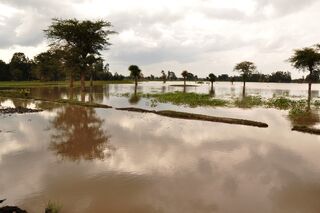How to Help Survivors of Extreme Climate Events

Source: Fethiopia / Pixabay
In September 2022, Puerto Rico, Cuba and Florida are devastated by hurricanes. Extreme weather events – floods, hurricanes and natural disasters such as wildfires – are associated with a wide range of negative mental health effects. The most commonly reported mental illnesses following extreme weather events and natural disasters are post-traumatic stress disorder (PTSD) along with depression, anxiety, suicide and substance abuse disorders (Cianconi et al., 2020).
Mental health systems are strained after widespread disasters
Those affected by the recent climate events are only at the beginning of their journey. Emergency counselors will be present for the first few days. However, the lasting effects on a community devastated by natural disasters last for weeks, months, or years. Mental health systems are strained as the number of people in need of help exceeds a community’s capacity.
Suggestions for helpers
For those helping individuals during and after a disaster, the following suggestions reflect Trauma Resource Institute’s experiences when we were invited to serve communities following man-made and natural disasters:
1. Be careful not to interrupt the rescuers’ work. Rescuing survivors and stabilizing infrastructure, such as restoring power, are priorities.
2. Help identify where survivors can purchase specific services: water, food, shelter, hygiene products, and bathrooms. Guide survivors to where government groups like FEMA have set up temporary sites. Older people may need assistance completing documents to receive benefits. As a result of the destruction, people with disabilities may have difficulty maneuvering to the sites to receive services. Organizations such as the Red Cross, local disaster response units, FEMA, Save the Children, and religious groups can provide network support for community members.
3. Communication systems may fail due to power outages. Not knowing how family members, friends, and pets are doing, and if houses are still standing, can lead to heightened anxiety. Try to provide as much information as to when vendors can restore communication systems.
4. You may assume that people need to talk about what happened during the disaster in order to heal. We have found that this is not necessarily true for every person. It’s important to invite decisions about whether or not to share what happened. Questions like, “I’m here to support you. If you’d like we can talk about what happened if that would be helpful. You can tell me as little or as much about what happened to you as you like.”
Ask strengths-based questions to remind survivors of encouraging elements in their experience
5. Questions that highlight strengths can help survivors remember what else might be true. Asking questions in this way often broadens the perspective of the trauma to include other elements of the experience that were more positive. Questions can be:
- “When did first aid arrive?”
- “When did you know that you and your family would come to a safer place?”
- “What or who is helping you the most right now?
- When a person is upset or sad, respectfully ask, “If challenging events have happened to you in the past, and what or who helped you get through them?”
Help now! Strategies can be simple and effective ways to help
6. Another way to calm down a distressed person is the “Help Now!” method. Strategies from the Community Resiliency Model set of wellness skills. They may seem simple, but they can help people calm down and feel more like themselves. The following invitations can help children and adults to feel better:
- Would it be helpful to go for a walk together?
- Sometimes it helps to get the energy of fear out by pressing your hands or your back against the wall. do you wanna do it with me
- May I bring you a glass of water?
- Sometimes when I’m scared, counting down from 20 helps me. would you like to try me
- When I feel a lot of tension in one part of my body, I try to find a part of my body that is less tense. Then I turn my attention to the parts that feel better. Would you like to try this?
- I found this app called iChill and I listen to it when I’m down or too anxious. You might want to consider using it when you are stressed or down.
Identify community mental health clinics and alcohol and drug treatment programs
7. Losing your home, livelihood and environment is a complex process. The road to recovery and rebuilding can make mental illness worse and also lead to increases in alcohol and drug use. Helping survivors find community mental health clinics and drug and alcohol treatment programs can lead them to important safety nets.
Here’s how to learn more
Contact the International Transformational Resilience Coalition (ITRC), inspired by the work of climate change advocate Bob Doppelt, for more information on how to build more resilient communities to prepare your community for climate events. The ITRC explains how society can invest in effective responses that can address the mental health challenges that inevitably arise from climate events. The coalition has a broad spectrum of experienced professionals working on a dynamic steering committee to guide its projects, policies, and advocacy, including representatives from the National Association of Social Workers, the American Psychiatric Association, the American Psychological Association, and American Public Health Association , the Alliance of Nurses for Healthy Environments and more. As a founding member, my organization, the Trauma Resource Institute, has worked with the ITRC to help communities prepare for and respond to climate events.